Heavy Body Acrylics
 The first acrylic colours offered by GOLDEN, Heavy Body paints are known for their exceptionally smooth, buttery consistency. The Heavy Body palette includes the largest assortment of unique pure pigments in a 100% acrylic emulsion available to professional artists. These colours offer excellent permanency and lightfastness. There are no fillers, extenders, opacifiers, toners, or dyes added.
The first acrylic colours offered by GOLDEN, Heavy Body paints are known for their exceptionally smooth, buttery consistency. The Heavy Body palette includes the largest assortment of unique pure pigments in a 100% acrylic emulsion available to professional artists. These colours offer excellent permanency and lightfastness. There are no fillers, extenders, opacifiers, toners, or dyes added.
Each Heavy Body colour formula reflects the qualities of its pigment. colours that tolerate a higher pigment load dry to a more opaque, matte finish. colours that are more reactive and do not allow as much pigment loading tend to have a glossier, more transparent, finish. Because Heavy Body colours contain no matting agents, the gloss of each colour will be different.
GOLDEN Heavy Body acrylics are currently available individually in 59ml tubes, with selected colours available in 237ml tubs. Additional larger tubs are available in Black and White up to 946ml
PRODUCT PROPERTIES
Viscosity and Consistency
GOLDEN Heavy Body Acrylics are noted for their exceptionally smooth, rich, buttery consistency. These paints have the ability to "stand up" and retain brush strokes or palette knife marks on the canvas.
All HB colours are thixotropic in nature. This means that when brushing or stirring, the paints actually lose viscosity and feel much thinner. The faster the paints are moving, the thinner they feel. Returned to a state of rest, the paints gradually increase in thickness until they are again restored to their formulated viscosity.
Film Flexibility
The HB colours retain excellent flexibility when dry, greatly diminishing the possibility of cracking that occurs in other natural and synthetic polymer systems. The acrylics can absorb the constant stress and strain placed on canvas when shipped or as it expands and contracts with changes in temperature and humidity. Please note: acrylics begin to harden at 15 degrees Centigrade or 59 degrees Fahrenheit, and become quite hard at temperatures below freezing. This is especially important to remember when shipping a painting in freezing conditions or when unrolling a painting that has been kept in cold storage.
Product Mixing Abilities
The HB colours can be mixed with all of our GOLDEN Mediums, Gels and other paint lines, including our High Flow Acrylics, Fluid Acrylics, High Load colours, Iridescent colours, Paste Paints, and Matte Acrylics. By mixing paint lines, artists can produce a wide range of paint consistencies without compromising colour strength. Heavy Body viscosity can also be reduced successfully with water. Remember: the more water added to the acrylics, the greater the subsequent shrinking of the paint layer. Too much water will reduce the binding capability of acrylic paints and tends to flatten out their sheen. Water works most effectively to increase the fluidity of the HB paints if a small amount of Acrylic Flow Release is added to the mixture.
Some artists have used other solvents, including alcohols, to thin the HB Acrylics. All of the acrylics are sensitive to additions of solvent. If you require this addition it is advisable to dilute the solvent first with water to reduce the shocking effect of the solvent. In some cases, adding solvent too quickly will coagulate the acrylic.
Blending with Mediums
The GOLDEN fluid mediums, including Polymer Medium, Acrylic Glazing Liquid, the GAC Mediums and the Airbrush Mediums, can be used to thin Heavy Body Acrylics. They also add a myriad of unique possibilities to the working and gloss properties of the paint surface. All GOLDEN mediums retain the film integrity of the acrylic, and in some cases they actually enhance the durability of the paint film. (Refer to Gels & Mediums Product Review for more information).
Product Gloss Variations
When producing the HB line, GOLDEN consciously broke the mold of the acrylics made in the past. Most acrylics were produced to have an even satin sheen across the range of colours. Manufacturers felt artists wanted this even sheen to avoid the differences encountered by oils. In Oils, the colours requiring very little oil (lean colours) tended to be very matte, while those colours requiring substantial amounts of oil (fatty colours) tended to be quite glossy.
GOLDEN decided not to add the flattening agents typically added to acrylic paints to unify the product's finish. We decided that each pigment would be made to its own level of matte or gloss depending upon its own unique nature. We also decided not to add opacifiers to our colours (use of opacifiers is critical for coverage of house paints, yet it is also the reason that house colours tend to be quite subdued compared to professional artist colours). These decisions allowed our colours to retain their clearest and cleanest quality, especially when used in washes or glazes. It is always possible to add matting agents and other whitening materials to the product, but once added, it is impossible to take them away. The HB line of acrylics contains no additional flattening agents, opacifiers or other solids that might interfere with the clarity of our pigments.
It is quite evident when looking at our colour chart that colours in the HB line do differ in gloss. For example, the sheen of GOLDEN Ultramarine Blue or Burnt Umber is almost a dead matte, whereas the sheen of Green Gold or Dioxazine Purple is extremely glossy. Some artists may find this problematic; yet for many artists the variations offer the same nuances of colour that are so appreciated in oil paints and give what many describe as an organic look to the colours. Without the need for opacifiers we can offer colours as similar in hue as the Cadmiums and Hansas, yet quite different in their ability to cover and in their clarity when mixing.
Colour Range
| The Main Set of colours | |
| Probably the biggest standout of our ever-expanding Heavy Body line is the breadth of unique colourants we offer. The line currently consists of 73 colours, 7 Neutral Grays, 3 Primaries, 7 Historical colours and 11 Custom colours for a total of 101 different colours, shades and tints. Only about 30 of these colours are mixture colours, while the rest of the Heavy Body line is produced from single, unique pigments. | 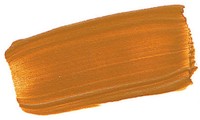 |
| Raw Sienna | |
| Mixture colours | |
| The mixture colours within the GOLDEN HB line of acrylics include Green Gold, Jenkins Green, Quinacridone Crimson and Turquois (Phthalo), as well as our Neutral Grays, Historical colours, Blended colours and Primaries. Some mixture colours, such as GOLDEN Historical colours, offer safe and lightfast alternatives for pigments that, otherwise, would be dangerous or insufficiently light stable for artist use. | 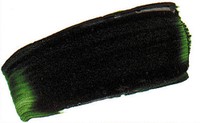 |
| Jenkins Green | |
| The Primary Set | |
| GOLDEN Primary Cyan, Magenta and Yellow in the HB line should be of special interest to artists who want a totally pared down palette or who are in need of a tool for teaching about colour mixing and blending. They have been formulated to be close in colour strength, so that one hue will not predominate over the other colours. The mixture of these products will produce an incredibly rich and infinitely varied wheel of colour. | 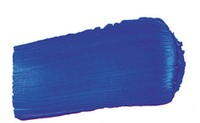 |
| Primary Cyan | |
PIGMENT SELECTION
The HB line is divided among inorganic and organic pigments.
| Inorganic Pigments | |
| Some inorganic pigments have been around for centuries and some for millennia. They are produced either with naturally mined pigments (sienna, umber, ochre) or with synthetically manufactured pigments, (iron oxide, carbon black, etc). Inorganic pigments may also be produced using a combination of these two processes. Pigments that are both mined and manufactured include the Cadmiums, Cobalts, and Titaniums. | 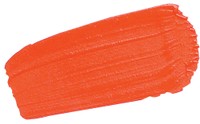 |
| C.P Cadmium Red Light | |
| Organic Pigments | |
| The organic pigments are a group of colours that are synthetically produced through complex carbon-containing chemistry involving various materials including petroleum, coal tar and natural gas. Many of these pigments have their roots in the chemistry of the 1800's, although widespread production didn't really begin until the 1930's. Even though they have only been available for several decades, organic pigments have demonstrated remarkable abilities to withstand the impact of light and weather. | 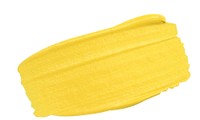 |
| Hansa Yellow Light | |
Pigment Selection & ASTM Standards
Every colour within the HB Line is approved for professional artist use according to ASTM Standards for Artist Materials. These standards regulate paint consistency and demand fineness and lightfastness of chosen pigments, use of 100% acrylic binder, freeze-thaw stability, and accuracy of labeling for pigments used. Evaluation by an approved toxicologist is required.
Of the 101 HB colours, 94 within the line are considered excellent in lightfastness (the ability to withstand colour change due to exposure to light). The remaining 7 are rated very good for lightfastness. GOLDEN does not use any colours within the HB line rated less than very good. Those colours rated as very good include the two Naphthols, Hansa Yellow Light, Permanent Green Light, Dioxazine Purple, Green Gold, and Primary Yellow. It should be noted that of the colours rated as excellent in lightfastness, the Cadmium colours are especially sensitive to the combination of light and moisture, so outdoor use of these colours should be avoided.
PIGMENT FAMILIES
| The Quinacridone Family | |
| There are more Quinacridones in the GOLDEN HB line than in any other acrylic line of paint. Quinacridone pigments produce seven intense colours ranging from deep yellow to vibrant violet. All of the Quinacridones, because of their vibrant undertones and high transparencies, tend to be excellent mixing colours. They tend not to muddy or gray, retaining their brightness. Perhaps the most important GOLDEN Quinacridone colour is Quinacridone Crimson, a colour with excellent lightfastness and similar working qualities to the more fugitive Alizarin Crimson. GOLDEN Quinacridone Crimson possesses the deep burgundy mass tone as well as the bright, rosy undertone of traditional Alizarin. GOLDEN"s Quinacridone Crimson has been used by conservation professionals to replace the fugitive Alizarin when restoring paintings. Like all of GOLDEN's Quinacridones, Quinacridone Crimson is exceptionally transparent and works particularly well as a mixing colour. Mixing Quinacridone Crimson with Phthalo Green B/S will almost magically produce one of the deepest blacks imaginable. Unique to GOLDEN's product line are the standout colours Quinacridone/Nickel Azo Gold and Quinacridone Burnt Orange. These Quinacridones have a luminosity that rivals the richest oil colours. Their mass tones tend to be quite dark, yet their undertones are incredibly vibrant. Quinacridone/Nickel Azo Gold looks very close to a Burnt Sienna in its mass tone, yet its undertone has a yellow fire not found in any Sienna. Similarly, Quinacridone Burnt Orange has a brown-red mass tone that reveals a brilliant red orange underneath. Quinacridone Red is GOLDEN's recommendation when a very intense mixing magenta primary is requested. It is very close in hue to the colour gels produced by Kodak for primary magenta at 5500 Kelvin. Quinacridone Magenta and Violet tend to be excellent choices for mixing colours in the lavender through purple range, with the addition of various transparent blues. Quinacridone Red, Red Lt., Magenta and Violet produce high intensity pinks through lavenders when mixed with white. GOLDEN recommends using these colours when a punch of a fuchsia or fluorescent colour is needed, yet permanency is also required, for a particular work of art. |
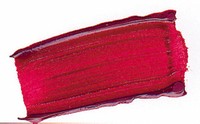 |
| Quinacridone Crimson | |
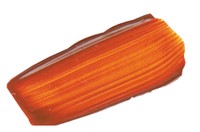 |
|
| Quinacridone/ Nickel Azo Gold | |
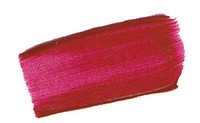 |
|
| Quinacridone Violet | |
| The Cadmium Family | |
| The second largest pigment family within GOLDEN's HB line is the Cadmium family. GOLDEN was the first company to introduce concentrated Cadmiums within an acrylic line. Before this occurred, other acrylic paint companies were using less expensive Cadmiums co-precipitated with Barium Sulfate. The Cadmiums range in hue from the glowingly bright Cadmium Yellow Primrose to Cadmium Red Dark. As a class of pigments, the Cadmiums are some of the most opaque of all colourants. Additionally, within their hue range they provide some of the most intensely vibrant mass tones. Because of their opacity, when mixed with other colourants they tend to produce rather dull hues. Cadmiums do mix with other Cadmiums quite well, however. Mixing a Cadmium Orange with a Cadmium Yellow will produce a deep yellow or light orange and the mixtures will retain the brightness of a pure Cadmium colour. GOLDEN is one of the only acrylic manufacturers to include a yellow hue that is lighter than the typical Cadmium Yellow Light. This unique pigment called Cadmium Yellow Primrose is as bright as some fluorescent colours, yet offers the same stability as the other Cadmiums in the GOLDEN line. Cadmiums have been considered somewhat controversial as a pigment class because of the claims of toxicity of the pigment. We do know that soluble Cadmium can be quite dangerous and produce heavy metal poisoning. All of the Cadmiums used within our product line have gone through extensive testing to assure that they have extremely low soluble Cadmium content. This is not the end of the controversy though, since more recent theories have suggested that even non-soluble Cadmium pigments could potentially be toxic. OSHA has created strict requirements for work environments where Cadmium pigments are being used. This is of extreme importance legally for artists, schools or any business that hires other employees or is responsible for public safety. If you are using Cadmium dry pigments within your work process, you are not, according to the new OSHA regulations, within allowable limits of exposure for yourself and those within your care. |
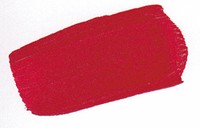 |
| Cadmium Red Dark | |
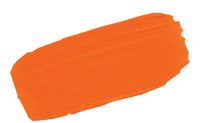 |
|
| Cadmium Orange | |
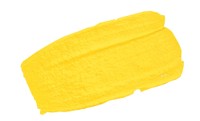 |
|
| Cadmium Yellow Light | |
| The Phthalocyanine Family | |
| The Phthalocyanines are known as the oldest organic pigments. The GOLDEN HB line contains 5 Phthalocyanine colours, including Phthalo Green (Yellow Shade) and Phthalo Green (Blue Shade), Turquois (Phthalo), and two Phthalo Blues, (Green Shade) and (Red Shade). These different Phthalocyanine colours actually contain the various pigment forms of the Phthalocyanine group. | 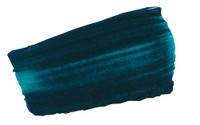 |
| Turquois (Phthalo) | |
| The Cobalt Family | |
| The Cobalt pigments are unique within the HB line. This range of 7 colours includes Cerulean Blue and Blue Deep (these contain both Cobalt and Chromium), Cobalt Blue, Cobalt Green, Cobalt Titanate Green, Cobalt Turquois, and the newest addition, Cobalt Teal. Cobalt Teal is an unusually clean and high chroma shade that possesses excellent lightfastness and opacity. | 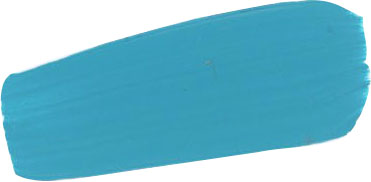 |
| Cobalt Teal | |
| The Pyrrole Family | |
| The Pyrrole family is one of the newer pigment families to be developed. The Pyrroles are almost as opaque and, in fact, brighter than our Cadmium colours. Pyrrole Orange, Pyrrole Red Light, and Pyrrole Red exhibit excellent opacity and lightfastness. They also offer clean mixing with other organics, unlike their Cadmium counterparts, which produce muddier blends. | 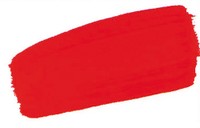 |
| Pyrrole Red | |










